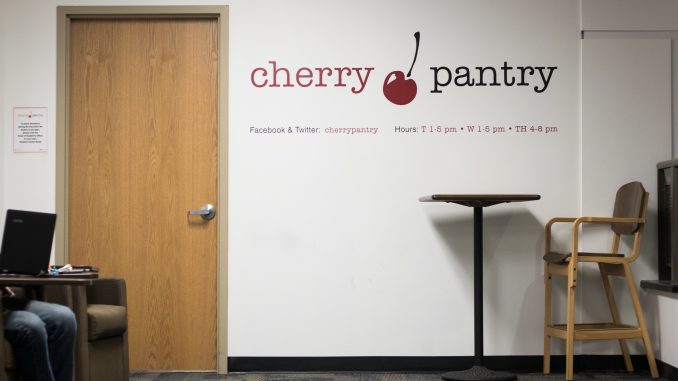
A government study released last month shaped by Temple University faculty research reported that college students at-risk of food insecurity aren’t participating in federal benefit programs.
Nearly 2 million college students at risk of food insecurity did not participate in the federal benefit programs, like the Supplemental Nutrition Assistance Program, they were eligible for in 2016, according to a December 2018 study by the U.S. Government Accountability Office. The study revealed 29 percent of all undergraduate students in the United States have low incomes and at least one other factor that contributes to food insecurity.
Sara Goldrick-Rab, a professor of higher education policy and sociology and founder of The Hope Center, conducted and supervised research that led the GAO, a nonpartisan agency that works for Congress, to write a national report on food security on college campuses. Four of Goldrick-Rab’s studies made their way into the GAO’s final report.
Since 2008, Goldrick-Rab and The Hope Center, which conducts research on students’ access to college and challenges to degree completion, have contributed to research on campus food insecurity, she said. Their efforts include a study that found one in three Temple students was food insecure within a 30-day period in 2017, which prompted the university to open the Cherry Pantry, an on-campus food pantry, in February 2018.
“For too long, we have been told that it is normal to be hungry in college,” Goldrick-Rab said at a Congressional briefing on Wednesday about the report. “We are told eating ramen is the solution.”
Of the students eligible for food stamp programs in 2016, 57 percent did not participate in them, according to the GAO report. This is due to lack of information about the programs, said Kathryn Larin, the GAO’s acting director of forensic audits and the investigative service team.
“Students don’t realize they’re eligible,” she said. “A lot of colleges and universities will have offices dedicated to getting students support, but [the offices] often don’t understand the SNAP rule.”
“The GAO actually says we have to invest in this problem, otherwise we’re undermining the massive investment that we’ve made in federal financial aid,” Goldrick-Rab continued. “…Researchers discovered college food insecurity the way Columbus discovered America — it was already there.”
The Department of Agriculture would be responsible for implementing policy changes to address food insecurity among college students, and the agency is currently furloughed due to the partial federal government shutdown, Larin said.
Despite being shut down, Larin said, the DOA can update food insecurity information on its website based on the report.
The federal government has an interest in students’ access to food since it invests funds in higher education, she said.
“That money is jeopardized if students can’t complete their education,” Larin told The Temple News. “If students can’t eat, they can’t complete their education.”
The report focuses on factors associated with food insecurity among college undergraduates, like whether students are first-generation college students, single parents, disabled, homeless or at risk of homelessness, were in foster care or receive aid from SNAP.
“The low-income student of today is not the low-income student of yesterday,” Goldrick-Rab said in Congress last week.
According to the report, 71 percent of college students are non-traditional students, which means they are financially independent or care for dependents, among other financial responsibilities.
“Often when people think about colleges students they think about traditional students who are supported by their families,” Larin said. “But non-traditional students are often working when at school and don’t have any financial support.”
College officials often tell students they are ineligible for SNAP because they are enrolled in school, which is not the case, Larin said. She said colleges and universities prevent students from accessing federal benefits by giving them incorrect information.
The university’s CARE Team, which identifies and supports students of concern, features information about SNAP and food resources on its website and encourages students to contact its office for a consultation if they are experiencing food insecurity. The university also started a task force in November 2017 to address food insecurity on campus.
The task force will host a regional meeting of colleges to teach them how to help students access SNAP and other programs on Tuesday. On Wednesday, The Hope Center will host a town hall on food insecurity and debt in the Temple Performing Arts Center from 6-8 p.m. Goldrick-Rab, city councilwoman Helen Gym and State Rep. Malcolm Kenyatta, whose district includes Main Campus, will participate in the discussion.
Michelle Martin, director of the Cherry Pantry, will attend the regional meeting in the Student Center, which is closed to the public. The GAO report highlighted problems that have only been recognized in the past few years, Martin said.
“You have students who are severely food insecure, and then you have students who are stretching meals, like buying a pizza and then making that last for four days,” she said. “Some students are able to get snack food, but food that will sustain them — it’s very difficult for a lot of students.”
Most students facing hunger find the Cherry Pantry via word of mouth, Martin said, and the pantry is starting to distribute more information about SNAP.
“We try to tell students and make them aware that it is something they should look into,” she said.


Be the first to comment